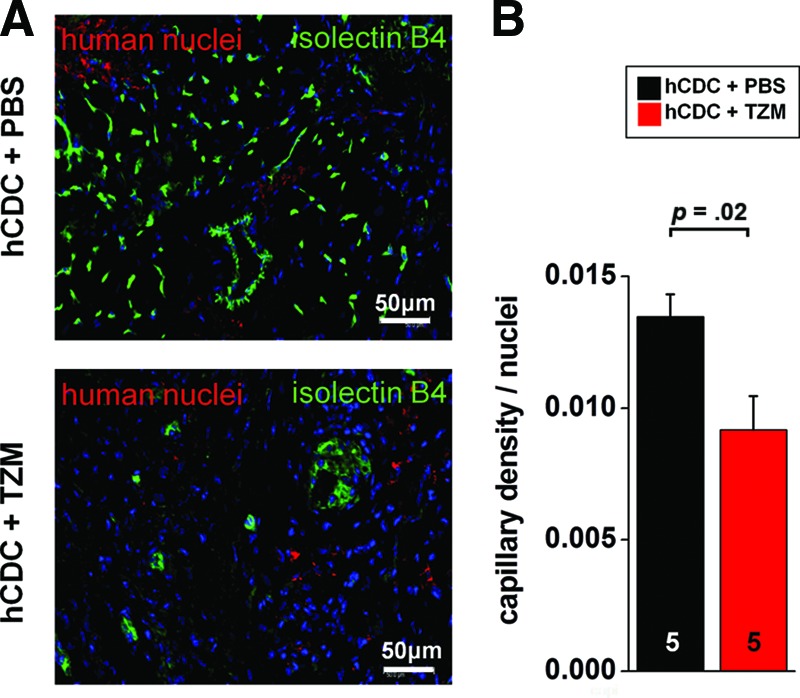Figure 6.

In vivo effect on angiogenesis. (A): Representative images of the infarct border zone myocardium of hCDCs + PBS-treated (top) and hCDCs + TZM-treated (bottom) animals, demonstrating a reduced number of capillaries in TZM-treated animals. Capillaries were stained with isolectin B4-fluorescein (green). Nuclei were stained with 4′,6-diamidino-2-phenylindole (blue) and with an antibody targeting human nuclear antigen (red). (B): After capillaries were stained with isolectin B4-fluorescein, green pixels were normalized to the number of total nuclei in the imaged infarct border zone area. Similar results were obtained when green pixels were divided by the number of human nuclei, stained with an antibody targeting the human nuclear antigen (Chemicon; data not shown). Images were taken at ×20 magnification. Scale bars = 50 μm. Abbreviations: hCDC, human cardiosphere-derived cells; PBS, phosphate-buffered saline; TZM, trastuzumab.
